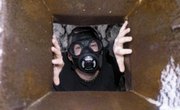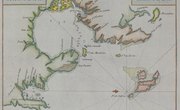The French Revolution took place between 1787 and 1799. The wave of peasant rebellion was sparked by a number of factors, including years of feudal oppression and widespread poverty. The revolutionary movement reached its climax in 1789 with the storming of the Bastille, but other locations played a key role in this defining moment of French history. By the end of the French Revolution, the first French Republic was declared and the ruling monarchy had been publicly beheaded.
The Bastille
On July 14, 1789, "sans-culottes" citizens stormed the Bastille, Paris' largest prison, in pursuit of arms and to free imprisoned revolutionaries. The Bastille was a large state prison and armory situated in the center of Paris, and while the storming of the Bastille had little to do with the victory of the Revolution, it was highly symbolic and inspirational. Ever since the storming of the Bastille, July 14 has been honored as France's Independence Day, also known as Bastille Day.
Château de Versailles
The Château de Versailles, also known as the Palace of Versailles, was built by King Louis XIV a few miles outside of Paris. Known for its immense splendor and size, Versailles played a key role in the French Revolution, not only a residence of the royal court, but as a diplomatic site where strategies and alliances were formed. On June 20, 1789, the famous “Tennis Court Oath," which affirmed that the signers would not stop their efforts until a new constitution had been adopted, was signed on the royal tennis court at Versailles, and on Oct. 5, 1789, a mob of angry French women marched on the palace in response to the food shortage.
The Tuileries Palace
After King Louis XVI and the royal family were forcibly taken from Versailles, they were placed under house arrest at Tuileries Palace, which stood on the right bank of the Seine River in Paris. Relocating the royal court to Paris in 1789 allowed the people to keep a closer watch on their actions, and for the next two years Tuileries Palace was the official residence of the king and his family. The royal family tried to escape on June 20, 1791, but they were captured at Varennes and returned to the Tuileries.
Related Articles
References
Writer Bio
Melissa Sherrard acquired her Bachelor of Science in public relations from the University of Florida in 2007 and has been writing professionally ever since. She also has extensive hands-on experience planning weddings and other private functions. She has created original print materials including announcements, invitations and programs for weddings, corporate events and private functions.











